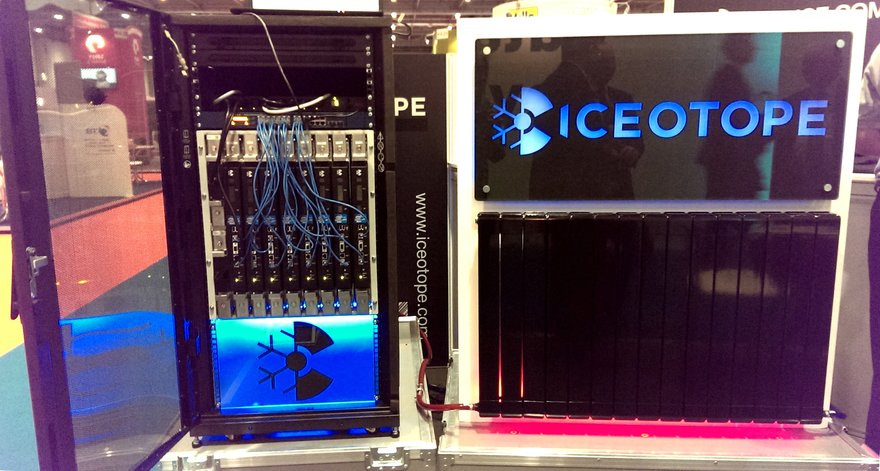British start-up Iceotope is scaling up manufacturing efforts to meet the demand for its proprietary ‘total liquid cooling’ server systems. The company expects to announce wider availability of production models in November, at DCD Converged in London and SC14 in New Orleans.
“We’re building out our capacity, making iterations to the product that are more suited to mass production,” founder and 'Chief Visionary Officer' Peter Hopton told DatacenterDynamics.
Iceotope has also reported on the success of pre-production technical trials at the University of Leeds and the Poznan Supercomputing and Networking Center, where it managed to considerably improve performance-per-Watt. The findings were presented at IP Expo in London.
“All we do is cool”
Iceotope systems wrap each server blade in a metal case filled with dielectric coolant, helping avoid the costs and carbon emissions associated with the need to cool the entire data center. The heat from the blades is extracted through a secondary system that circulates water.
‘Total liquid cooling’ means the systems don’t feature a single fan. And since there are no fans, they run considerably quieter than air-cooled servers.
The liquids do not leave the system so there’s no waste, and water can be mixed with additives to increase its conductive properties. It can even heat the building, if the pipes are routed through domestic radiators.
Iceotope says it can eliminate the need for computer room air conditioning units, humidity control systems or air purification equipment, lowering TCO and energy use.
Liquid cooling systems are especially suitable for traditionally power-hungry and hot High Performance Computing (HPC) workloads. That’s exactly the type of workloads that have been running at the University of Leeds for the past 18 months.
“The University of Leeds compared Iceotope directly with a rear door heat exchanger system, with the same IT specification in both. They found, overall, a 40.8 percent improvement for performance-per-Watt from the Iceotope system,” told us Hopton.
Meanwhile in Poznan, as long as the coolant was kept at a certain temperature, the server could run all of its cores in Turbo mode all of the time, squeezing additional performance out of the capital investment it already made.
“The results show that having a liquid cooling environment isn’t just about efficiency, it’s about performance,” said Hopton.
Last month, Jaishankar ‘Jai’ Menon, Chief Research Officer at the recently established Dell Research division, suggested that by 2020, advances in liquid cooling will help build data centers with a PUE (Power Usage Effectivenes) of 1.03, across any climate.
We asked Hopton whether this was realistic. “As long as we talk about partial PUE, yes. Obviously you’ve got your mains input transformers to consider and stuff like that. But at Poznan, they got a partial PUE of 1.02.
“Also, we don’t have any fans inside the servers, we don’t have any server-level pumps in those figures – it’s literally motherboard and up.”
Earlier this year, Iceotope raised US$10 million in a Series A funding round, led by Aster Capital and Ombu Group. At the same time, it announced a strategic partnership with the French energy management company Schneider Electric – one of the world’s leading manufacturers of modular, container-based data centers.
“We consider ourselves open for business. I’d love to be in a situation where we got more IT partners coming forward, and we can work with them to make a larger variety of IT equipment for these systems. I think in the long term, in order for this to be a successful platform, there has to be a sufficient variety of IT in both brands and specification,” said Hopton.

